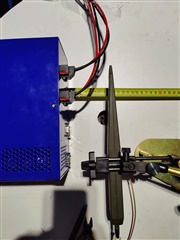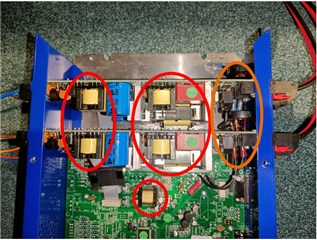Other Parts Discussed in Thread: UCC37324
Hi.
We are currently investigating one of our customers amplifier design that has UCC3895 full bridge driver making the +-180voltages for the AMP. The issue currently is that it is failing the radiated emissions in the 100kHz-30MHz area, mainly in the 100kHz-1MHz region. Issue could be sligthly improved with input side filtering and case emc shielding, but these modifications were not enough.a
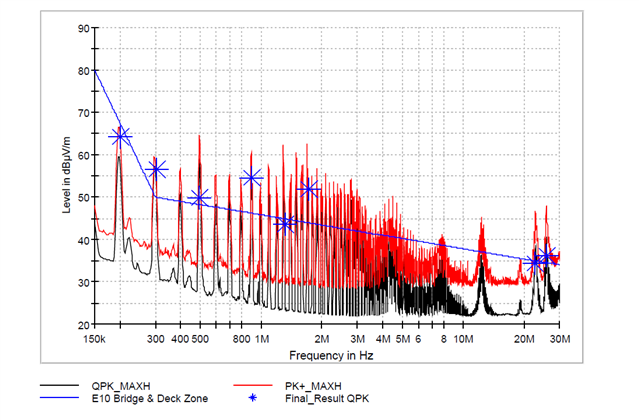

Now that we have been studying this more it looks like it could be the UCC3895 driven FET's and their ringing that could be causing it. There could be also some other things to tune since the high side FET turn on and off has glitches every now and then.
For some reason the design doesn't follow the TI reference design and we have no notes or testing results why this design was used.
As we can see there is some improvements to be made at least on the switch on side and the switch on ringing can also be seen in the 24V input side -> which causes emissions to the power supply input cables.
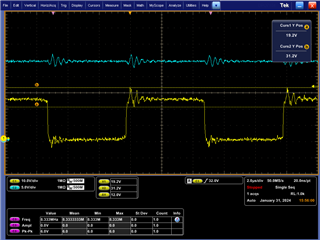
One of the issue is the switch on/off ringing of the FET output and the kind of weird looking driving voltage from the T1 transformer that is driving FET gate signals. It could be that the series resistors R15/R73 (22R resistors parallel) between T1 transformer and Z12 UCC373254 are there to slow down the GATE driving voltage. The issue which most likely comes from this is that the high side GATE driving voltage has glitches every now and then.
CH1 turn off/on waveform (yellow), CH2 T1 pin 6 (blue), CH4 V2 LOW side FET gate signal (green)
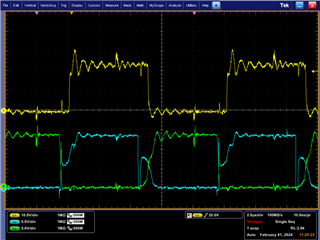
The other issue is the ringing after switch on and off that is not visible all the time, but most of.
CH1 turn off/on waveform (yellow), CH2 T1 pin 6 (blue), CH4 V1 HIGH side FET gate signal (green)
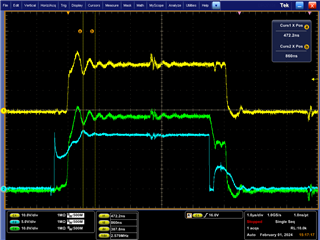
Sometimes the driving signal looks well damped and it is not oscillating. I haven't really figured yet out what is causing this difference.
CH1 turn off/on waveform (yellow), CH2 V1 HIGH side FET gate (blue)

We have already tried couple of things.
- smaller series resistors (was 11ohm -> changed to 5ohm) between T1 transformer and UCC37324 -> It slightly improved the glitches, but the glitches are still visible
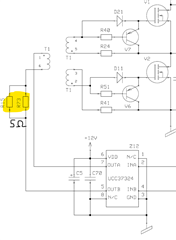
- Removed C86 and C27 100nF capacitors from FET outputs -> Little to no effect on the oscillation
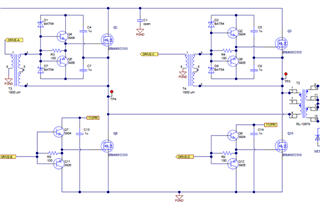
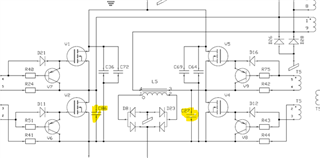
- added 470pF & 5ohm snubbers to FET bridge outputs -> Minimal improvement in FET oscillation
- Tried also 820pF & 5ohm snubber combo on the V5 &V4 side, but that also had minimal effect on oscillation.

There are couple of things that I had in mind to still try. One is to modify the high side FET gate signal to slow down the switching on. The other one is to try different snubber components.

We are open to suggestion what to study/tune next.



